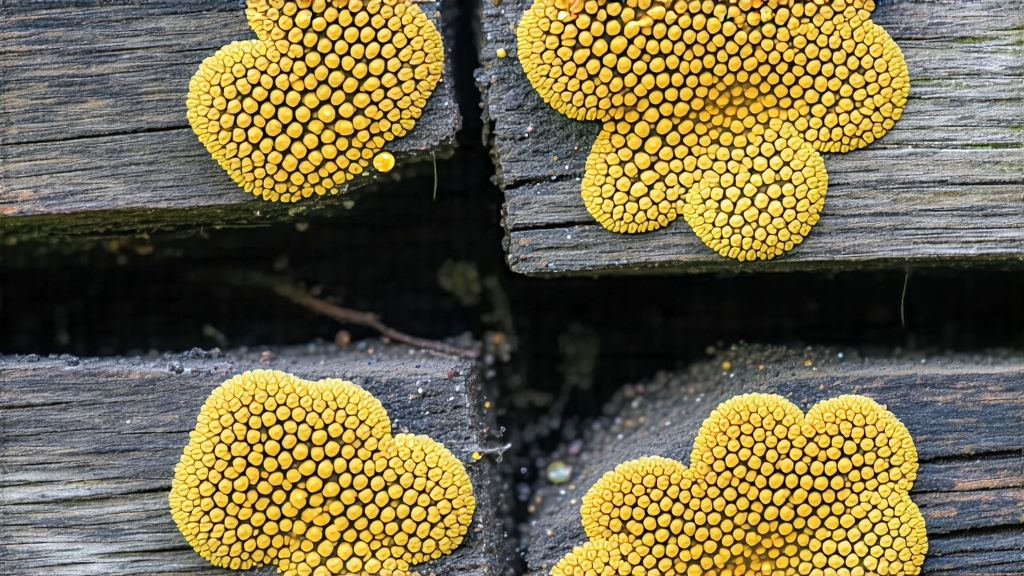
Few teas carry the perfume of history as literally as Fu brick tea. When camel bells faded into the Gobi dusk, the bricks that lined caravan saddles were not mere cargo; they were compressed microbiomes, slowly blooming with a luminous yellow fungus that Tibetan, Mongol and Uyghur traders learned to greet as “the golden flower.” Today, that same flower—Eurotium cristatum—remains the living signature of Fu brick, the most aromatic and scientifically intriguing member of China’s dark tea (heicha) family.
Origin along the Hexi Corridor
Fu brick was born in Jingyang county, Shaanxi, during the Northern Song (960-1127). Imperial law required Sichuan and Hunan rough teas to be trucked to the northwestern frontier where horses were traded for tea. At the county’s “Official Tea Bureau of Fu” (Fu meaning ‘to administer’), tea was steamed, pressed into 2 kg bricks, and wrapped in reed matting for the 1,500 km march to Lhasa and Kashgar. The name “Fu brick” therefore commemorates both a place and a function: the administrative brick that financed cavalry with caffeine.
From Shaanxi the craft drifted south to Hunan’s Anhua county during the 1860s when the Qing government decentralized production. Anhua’s humid climate and abundant pine firewood proved ideal for the 28-day “flowering” phase, and the county still supplies 80 % of modern Fu brick. In 2010 the Chinese government granted Anhua Fu brick national geographical-indication status, the equivalent of a European appellation.
Two styles, one microbe
Although factories now produce dozens of weights and shapes, two archetypes dominate:
- Traditional Fu brick (Ma Huo): 2 kg rectangular brick, 18 cm × 9 cm × 5 cm, wrapped in natural reed and bamboo twine. The brick is so dense that a tea merchant’s iron guillotine is needed to break it; the cut face reveals a constellation of golden grains.
- Mini Fu brick (Qiao Zhuan): 200 g square tablet designed for urban consumers. The same fungus grows, but the shorter piling cycle yields a lighter, honeyed liquor.
Both styles rely on the same invisible master: Eurotium cristatum, a xerophilic ascomycete that colonizes the leaf only when moisture, temperature and oxygen reach a narrow three-way balance. Chinese scientists have sequenced its genome and discovered genes that hydrolyze tea polyphenols into the mellow pigment theobrownin while simultaneously cleaving proteins into free amino acids that create a lingering sweet aftertaste known as “sheng jin” (literally, “generating saliva”).
Crafting a living brick
The journey from fresh leaf to fragrant brick takes one full season and involves six milestones:
- Picking: Only the 3rd and 4th mature leaves plucked after Grain Rain contain enough lignin to feed the fungus later.
- Pan-firing: Leaves are tumble-tossed at 280 °C for 3 minutes to destroy leaf enzymes, fixing the green character and sterilizing the surface.
- Rolling: A 45-minute mechanical kneading ruptures cells, preparing substrates for microbial enzymes.
- Pile-fermentation: 5 tons of damp tea are heaped 1 m high in a pine-lined room. Temperature climbs to 55 °C within 24 h; thermophilic bacteria bloom first, softening fibers and raising pH to 6.5, the sweet spot for Eurotium.
- Bricking & flowering: Tea is steamed for 30 seconds, pressed into molds under 50 t hydraulic pressure, then transferred to the “flower room.” Here bricks are stacked on pine shelves 10 cm apart; humidifiers keep RH at 78 % while fans cycle air every 20 minutes. Between days 8 and 20 the golden flower erupts, visible to the naked eye as 0.3 mm canary specks. Tea masters listen for a faint chestnut aroma; when it drifts through the alley, the bricks are moved to a drying tunnel.
- Drying & aging: 30 °C warm air gradually drops moisture to 9 % over seven days. The bricks are then wrapped in reed and left in a ventilated warehouse for a minimum of one year; during this time the fungus goes dormant, its metabolites slowly diffusing inward.
The finished brick contains 1–2 million CFU of